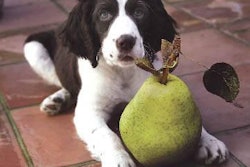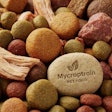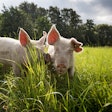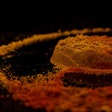Good Purchasing Practices
Introduction
The aim of this presentation is not to discuss commercial aspects of purchasing, or the logistics of ordering and delivery. This presentation will only focus on the aspects of purchasing which have an impact on petfood safety.
ISO 9001 purchasing requirements
Close to one million organizations worldwide are certified according to ISO 9001, requirements for management systems. The standard dedicates a clause to purchasing, from which much can be learned:
|
7.4 Purchasing 7.4.1 Purchasing process
The organization shall ensure that purchased product conforms to specified purchase requirements. The type and extent of control applied to the supplier and the purchased product shall be dependent upon the effect of the purchased product on subsequent product realization or the final product. The organization shall evaluate and select suppliers based on their ability to supply product in accordance with the organization's requirements. Criteria for selection, evaluation and re-evaluation shall be established. Records of the results of evaluations and any necessary actions arising from the evaluation shall be maintained.
7.4.2 Purchasing information
Purchasing information shall describe the product to be purchased, including where appropriate: a) requirements for approval of product, procedures, processes and equipment; b) requirements for qualification of personnel; and c) quality management system requirements. The organization shall ensure the adequacy of specified purchase requirements prior to their communication to the supplier. 7.4.3 Verification of purchased product The organization shall establish and implement the inspection or other activities necessary for ensuring that purchased product meets specified purchase requirements. Where the organization or its customer intends to perform verification at the supplier's premises, the organization shall state the intended verification arrangements and method of product release in the purchasing information. |
In 2001 ISO published a document called "ISO 15161, Guidelines on the Application of ISO 9001 for the Food and Drink Industry". This document quotes ISO 9001, and for each clause offers guidance on how the requirement should be applied in a food organization. It is interesting to read the guidance offered with regard to purchasing:
|
ISO 15161 guidance on clause 7.4.1 All materials and services used to meet customer requirements in the manufacture of product should be purchased in a controlled manner that reflects the importance of that material or service to the finished product. Within the food and drink industry, this could include the following: a) Ingredients; b) Processing aids; c) Water (processing water and water treatment); d) Maintenance, equipment, packaging and food contact materials; e) Subcontract operations (i.e. contract packing); f) Primary producers (e.g. animal husbandry, primary crop processing); g) Testing and laboratory services; h) Hygiene services (including the purchase of cleaning chemicals used on product contact surfaces) and pest control; i) Training; j) Transport and distribution; k) Warehousing (of both raw materials and finished products).
The level of control a company wishes to exert over a supplier will depend on the nature and intended use of the material. Anything used as an ingredient, or coming into direct contact with the product, will probably need tighter controls than items such as office equipment. It should be remembered that declarations of compliance with legislation do not necessarily mean that the component is safe.
The hazard analysis assessment of the process will identify raw materials and other inputs which need to be controlled, and will be identified as a "critical control point" (CCP). This can then result in the need for increased control over the supplier. Suppliers of materials or services should be selected carefully, with a full investigation into their capability to supply the organization's stated requirements. The criteria for acceptance of a supplier should be clearly established and recorded. Suppliers' performance should be monitored for all parameters, including quality, delivery and shelf-life. The monitoring methods should be recorded, together with methods for the selection of suppliers and, if necessary, the removal of unsatisfactory suppliers.
Purchasing has been linked to Principle 3 of the HACCP process (establish critical limits). To identify potential hazards in a process, having assessed whether or not special procedures are required for the process to be under control, consideration should be given to the raw materials (of all types) used in the process. The establishment of appropriate specifications for raw materials, and the use of only those suppliers with the capability to adhere to these specifications, will ensure that hazards are not introduced into the process at an early stage, where a later process step is then necessary to reduce that hazard to an acceptable level. |
This presentation will elaborate on the ISO purchasing guidelines adding important practices which should be included in purchasing activities.
Supplier selection and evaluation
Of the many parameters affecting the selection of suppliers, safety must be top priority. Issues of price and availability should not even be considered if the supplier has not been cleared by the food safety team. The following practices should be followed:
1) Authorization of a supplier should always follow at least one supplier audit. An organization can compile their own audit criteria or use existing audit programs. Audits should only be carried out by trained and skilled auditors. If the purchasing organization does not have a qualified person, then a professional auditor can be hired. In these cases it is recommended that somebody from the food safety team join the audit.
Appendix G in the book Petfood Technology (Kvamme & Phillips, Watt Publishing) offers a comprehensive checklist that can be used for auditing manufacturing or raw materials and packaging materials.
2) Each supplier should be at least annually evaluated and preferably scored. The score should include sub-scores for various purchasing parameters, each weighted according to its importance. Needless to say, audit results and safety performance should have a substantial contribution to the score. The score should determine the class of the supplier: A, B, C, etc. New suppliers should always be given a special class until they have proven themselves.
3) Preference should be given to externally certified suppliers. External certifications include, but are not limited to:
- ISO 22000 - Food safety management system
- HACCP (various certification schemes)
- BRC - British Retailers Consortium Global Food Safety Standard
- BRC-IoP - British Retailers Consortium + Institute of Packing standard for packaging material manufacturers
- IFS - International Food Standard, written by German and French retailers
- SQF 1000 for primary producers and SQF 2000 for manufacturers
- GlobalGAP - Good Agricultural Practices
Always make sure that the certificate is current. Certification can be revoked; therefore it is good practice to periodically review the status, preferably online.
4) Always authorize the manufacturer. In our industry there are many brokers, reps and agents. A food safety audit should be carried out at the manufacturer's premises, even if you aren't purchasing directly from them.
5) The frequency and extent of supplier audits should be planned based on two inputs:
a) The suppliers past performance
b) The risk associated with the product being purchased
The risk of the product being purchased is the outcome of the HACCP program.
Purchasing information
Goods and services being sold must be accompanied by clear specification documents agreed upon by both sides. The specification shall include the guaranteed maximum levels of food safety hazards relevant to that specific product: bacteria, yeasts and molds, pesticides, heavy metals, mycotoxins, foreign material, etc.
The best practice is for the organization to establish its own specifications for purchased goods on a formalized document. It is then the supplier's responsibility to deliver as per the requirements of the buyer. This is especially beneficial when the same item is purchased from more than one supplier. This practice also ensures that all of the desired information is included.
It is acceptable, albeit less desirable, to adopt the supplier's specification.
Specifications should be reviewed at least annually to ensure their adequacy.
Verification of purchased product
Organizations should establish and implement precise procedures for the inspection and release of incoming goods. For each purchased product a specific release policy must be defined. Inspection and release activities vary and can include:
- Inspection of documents: each shipment should be accompanied by at least a Certificate of Conformity (COC) and preferably with a Certificate of Analysis (COA). The COA is better because it contains actual results of product analysis. Sometimes, on the same document, the results for some parameters represent a promise of conformity but have not actually been tested for the batch, while others represent the actual results of analysis. This type of document is a COC - COA "combo". For all results the test method should be included. The values on the COA should be within the range agreed upon in the specification. The COA and the COC must include a batch or lot number compatible with the actual goods delivered. The person who has read the COC or the COA should sign their name on the document.
- Visual inspection: incoming goods can introduce contamination and hazards. All incoming goods must be visually inspected to make sure:
- that goods have not been tampered with (bulk materials should be delivered with an intact safety seal)
- that the external packaging is clean
- that the labels coincide with the documents
- that the supplier follows a FIFO policy
- that no infestation is present
- the material itself should be subjected to a visual and organoleptic (if applicable) inspection to make sure that the product matches the package, that there are no objectionable odors, etc.
Visual inspection should be documented and goods should be marked to indicate that they have been inspected.
- Sampling and analysis - even if no laboratory analysis is planned, it is good practice to obtain a sample and to retain it for reference. The organization must decide, for each purchased product what parameters, if at all, to analyze, where to perform the analysis (externally or in-house), which analytical methods to employ, etc. It is important to differentiate between tests performed for the purpose of routine surveillance (monthly pesticide test, quarterly vitamin analysis, etc.) and those performed as part of the rejection / acceptance process. All of these decisions should be based on the HACCP program.
- Acceptance / Rejection - for every purchased product there should be a document clearly stating the inspection method and the acceptance / rejection criteria. These decisions are the outcome of the HACCP program, where each purchased product is assessed to determine the hazards it may introduce into the product and the significance of these hazards.
Summary
It has been said that those who fail to prepare, should prepare to fail. Establishing, implementing and maintaining good purchasing practices will contribute to product safety as long as these practices are determined based on HACCP and as long as our suppliers understand that we are serious about petfood safety.

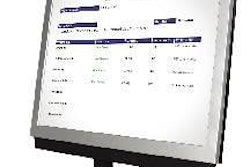

.png?auto=format%2Ccompress&fit=crop&h=167&q=70&w=250)
